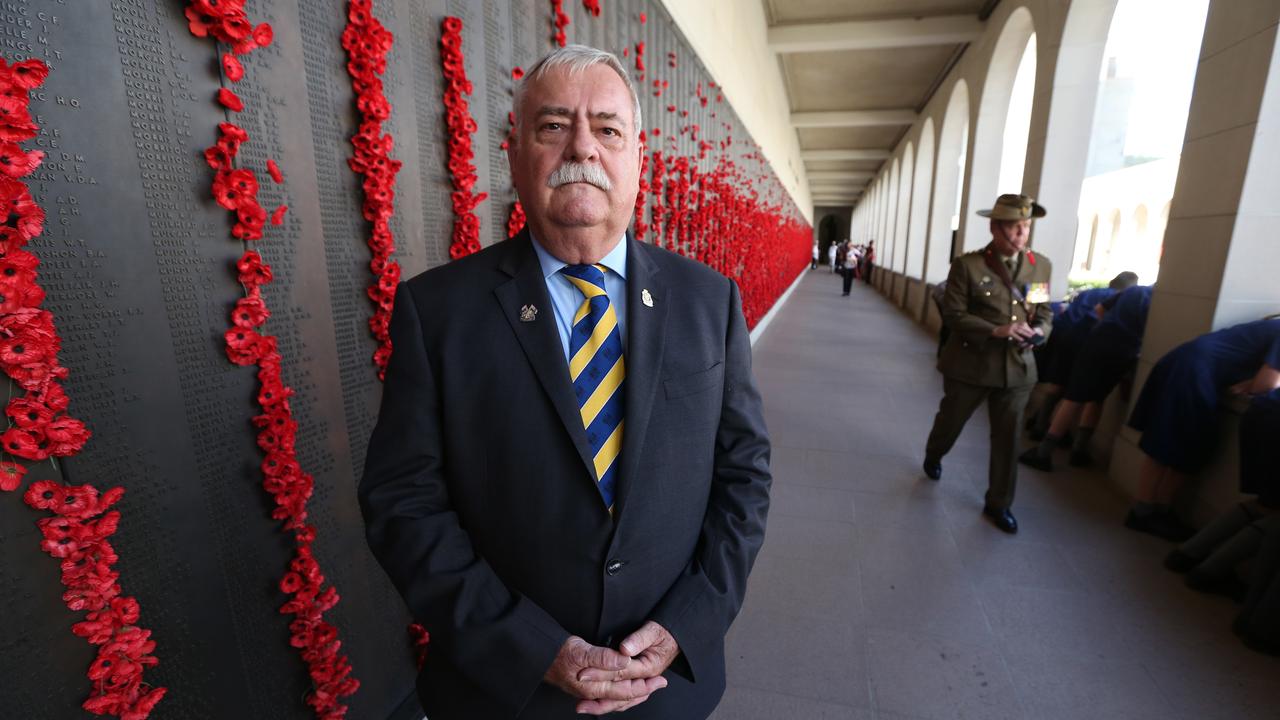Warships cost blows out to $9bn
The Air Warfare Destroyer program will run about $2bn over budget and be nearly three years late, an audit shows.

The Air Warfare Destroyer program will run about $2 billion over budget and be nearly three years late, according to a forensic audit to be released today.
The total cost to build the three missile destroyers will exceed $9bn, meaning each ship will cost approximately $3bn. Comparable ships built by Navantia in Spain cost about $1bn.
If Australia had bought the ships ready-built in Spain, it could have had nine for the price of three, or saved $6bn.
The Abbott government’s forensic audit establishes a new baseline of costing and timing for the deeply troubled project.
The government will also today announce a limited tender seeking to inject either a new managing contractor into the government’s Adelaide-based shipbuilder, ASC, for the remainder of the AWD building phase, or, if that is not practical, a new management partnering arrangement to enhance ASC’s capability. The government hopes this tender process will be completed within a few months.
The forensic audit reveals that the minimum cost overrun in the AWD project is $1.2bn. However, the long delay, of more than 30 months for each boat, means the Australian navy will incur substantial additional costs because of the necessity to keep ageing FFG destroyers in service beyond the dates that they were planned to be scrapped.
The first of the AWDs, New Ship Hobart, will be floated off tomorrow. However, it will not be delivered until June 2017 at the earliest because there is still substantial fit-out and systems integration work to be done. Even then, it will be some time after it is delivered before it is formally commissioned.
The Hobart was originally scheduled to be delivered last December. The second ship was originally scheduled for delivery in March next year but is not now scheduled to be delivered until September 2018. The third ship was originally due for delivery in June 2017 but is not now scheduled for delivery until March 2020.
The revelation that the cost of building each ship in Australia is approximately three times the cost of building it in Spain has profound implications for the Australian naval shipbuilding industry.
The Abbott government has said it is committed to sustaining a naval shipbuilding industry but believes significant reforms to the industry are necessary for this to be practical. These reforms focus on improving productivity, reducing modifications on established military designs that are unique to Australia, enhancing the integration between the designer and the manufacturer, and tightening government oversight of financial and management matters.
The AWD is being built under a unique alliance structure that involves the government, ASC and defence contractor Raytheon.
According to a highly placed source, the Abbott government found the project in “a shocking state” when it took office.
It has established a series of interim reviews to try to get the project back on track. The most important was a review into the AWD program conducted by Donald Winter and John White.
The Winter report, which has never been released publicly, found a series of basic flaws in the AWD project. The initial plan was unrealistic in both cost and timing estimates and the alliance structure was unable to provide effective management.
The report found two causes that reflect very poorly on the management of the project under the Gillard and Rudd governments. The first was that government oversight had been ineffective and the second was that the government had not developed a coherent long-term shipbuilding plan.
The government has taken a number of interim measures to try to get the AWD program back on track, including installing an interim chief executive in Mark Lamarre. It has also brought over 17 skilled personnel from Navantia to work with the Australian shipbuilders. It has added skilled personnel from BAE, and Raytheon has taken on increased management responsibility.
Since these changes were made, productivity has increased according to a number of measures. Shift plan adherence has increased from 10 per cent in June last year to 40 per cent now, and direct labour utilisation has increased from 25 per cent in June last year to 60 per cent now.
The lack of intimate involvement by sufficient Navantia personnel in the building phase of the AWD is considered by many observers to be one of the fundamental problems in the execution of the contract.
Senior government figures are believed to accept there will always be a cost premium to building naval ships in Australia and that this is a reasonable cost to pay for securing technology transfer, creating jobs and enhancing maintenance capability.
The government believes the cost premium involved in the AWD project is completely unreasonable, however.
The government is believed still to have a broad intention to build the navy’s replacement frigates in Australia but will require substantial industry reform to make this decision.
The government also plans to finalise a choice by the end of the year between German, French and Japanese options for a submarine to replace the Collins-class boats, which are due to start retiring by the middle of the next decade. All up, the design, build and through life support for the new submarines is costed at about $50bn, making them the biggest single contract entered into by an Australian government.
The French and Germans have said they can offer options involving a substantial amount of building in Australia, while it is as yet unclear how much direct Australian work the Japanese option will offer.




To join the conversation, please log in. Don't have an account? Register
Join the conversation, you are commenting as Logout